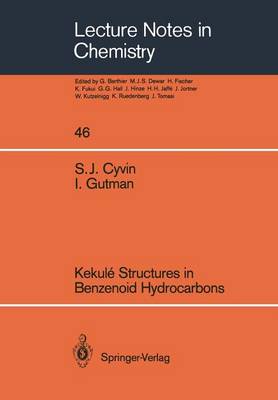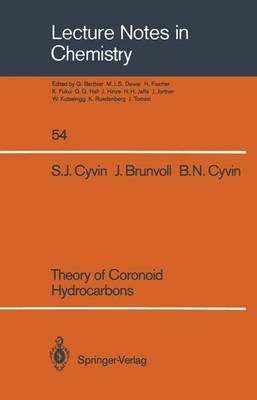Lecture Notes in Chemistry
2 primary works
Book 46
Kekule Structures in Benzenoid Hydrocarbons
by Sven J. Cyvin and Ivan Gutman
Published 10 February 1988
This text is an attempt to outline the basic facts concerning KekulEURO structures in benzenoid hydrocarbons: their history, applica tions and especially enumeration. We further pOint out the numerous and often quite remarkable connections between this topic and various parts of combinatorics and discrete mathematics. Our book is primarily aimed toward organic and theoretical chemists interested in the enume ration of Kekule structures of conjugated hydrocarbons as well as to scientists working in the field of mathematical and computational chemistry. The book may be of some relevance also to mathematicians wishing to learn about contemporary applications of combinatorics, graph theory and other branches of discrete mathematics. In 1985, when we decided to prepare these notes for publication, we expected to be able to give a complete account of all known combi natorial formulas for the number of Kekule structures of benzenoid hydrocarbons. This turned out to be a much more difficult task than we initially realized: only in 1986 some 60 new publications appeared dealing with the enumeration of Kekule structures in benzenoids and closely related topics. In any event, we believe that we have collec ted and systematized the essential part of the presently existing results. In addition to this we were delighted to see that the topics to*which we have been devoted in the last few years nowadays form a rapidly expanding branch of mathematical chemistry which attracts the attention of a large number of researchers (both chemists and mathematicians).
Book 54
Theory of Coronoid Hydrocarbons
by Sven J. Cyvin, Jon Brunvoll, and Bjorg N. Cyvin
Published 1 January 1991
The present studies of coronoid systems is a natural continua- tion of the corresponding studies of benzenoid systems. Both topics are rooted in organic chemistry through certain polycyclic conjugated hydrocarbons, which are the chemical counterparts of the systems in question. HO'v'Tever, the scope of the present work and corresponding works on benzenoids goes far beyond a chemical motivation. These works are classified under mathematical chemistry, a relatively new designa- tion. The book is supposed to have an interest for organic chemists within certain specialities, but still more for theoretical and mathe- matical chemists. The last category has been characterized as enfants terribles in the foreword of the first issue of the Journal of Mathe- matical Chemistry (1987). Finally, this book may have a considerable interest for mathematicians within combinatorics and gra~h theory. It is supposed that the book will be most useful for researchers, including graduate students, in the pertinent fields. The text contains no advanced mathematics whatsoever and should as such not represent any barrier even for undergraduate students.
Here we wish to make some comments on the terminology, which is not standardized and is partly controversial in this field of topolo- gical studies of polyhex (benzenoid and coronoid) systems.
Here we wish to make some comments on the terminology, which is not standardized and is partly controversial in this field of topolo- gical studies of polyhex (benzenoid and coronoid) systems.

